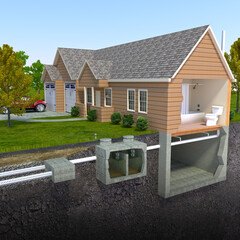
Veterinary hospitals and clinics are essential for the health and well-being of pets. They provide a wide range of medical services, from vaccinations to laser surgery.
Typically, Animal Hospital Lapeer offers more specialized treatments than clinics. This means they will be better equipped to handle emergencies, such as a pet that has been hit by a car or ingested something toxic.
Level 1 Trauma Center
Veterinary trauma centers are equipped to handle the most serious medical cases that cannot be handled at smaller clinics. They are also leaders in research and education, ensuring that advancements in the field of veterinary trauma are shared rapidly. The American College of Veterinary Emergency and Critical Care Medicine (ACVECC) has set standards for these centers, which include requiring them to be fully prepared around the clock, have access to expert consultation from specialists, and more.
The first step in becoming a veterinary trauma center is obtaining provisional status from the ACVECC. This requires an official letter of endorsement from a hospital’s medical director and a survey detailing the resources available at the facility. After the hospital has completed this process, it can begin the verification application process, which usually takes 12-18 months.
Veterinarians who are members of the ACVECC Veterinary Trauma Committee will work with these hospitals to ensure that the facilities meet the minimum requirements for a level 1 trauma center. This includes having at least two doctors on call at all times, a full-time board-certified emergency and critical care specialist, access to experts in multiple fields, including a radiologist, during business hours, and a 24-hour hotline.
In addition, a level 1 trauma center must be fully prepared around the clock to treat the most severe small animal injuries, which are often more life-threatening than those that affect humans. This means the facility must have a dedicated, 24/7 staff of emergency and critical care veterinarians, an experienced trauma surgeon, and specialists in multiple fields, including radiology, internal medicine, surgery, and anesthesiology.
The staff must also be able to provide immediate transport for patients, which is important because some animals require rapid transfer to a larger hospital for treatment, especially in the case of an extremely severe injury. The hospital must also be able to perform a wide range of procedures, including limb reattachments, open heart surgeries, and advanced orthopaedic surgeries.
As more pet owners become aware of the importance of proper veterinary care, they are seeking out facilities that are capable of handling their pets’ most serious health issues. Thankfully, more and more veterinarians are offering care that can be affordable to even the most budget-minded pet owner.
Board-Certified Veterinarians
Choosing the right veterinarian is a big decision. You want someone you can trust, and who will make your pet feel comfortable and safe. While many factors go into making this choice, one of the most important is whether or not your vet is board-certified. This designation isn’t easy to achieve and demonstrates a high level of knowledge and expertise in a particular area of veterinary medicine.
To become board-certified, veterinarians must complete at least four years of veterinary school and then complete a residency program. During this time, they will work closely with experienced specialists and gain valuable hands-on experience in their field of study. In addition, they must log a minimum number of cases and pass rigorous exams.
Once a veterinarian becomes board-certified, they are considered a specialist in their field and can offer more advanced services than general practitioners. This includes diagnosing and treating more complex conditions, as well as providing a wider range of treatment options. Furthermore, board-certified veterinarians are committed to continuing education and upholding high standards of professional behavior, which can provide you with peace of mind knowing your pet is receiving top-quality care.
In addition, many veterinary hospitals have dedicated surgical suites that are equipped with state-of-the-art tools to provide your pet with the best possible care. These rooms are designed to maintain a sterile environment, which is essential for ensuring the safety and comfort of your pet during surgery. Additionally, veterinary hospitals often have access to specialized services that aren’t available at other practices, such as oncology and cardiology.
A veterinary hospital also has a staff of trained nurses and technicians who are ready to provide around-the-clock care. This includes emergency care, which is critical for treating pets with life-threatening medical conditions. Typically, a hospital will have more veterinarians and staff on hand than a clinic, which means that it can handle a greater volume of cases at a given time.
Another thing to look for in a veterinary hospital is certification from the American Animal Hospital Association (AAHA). This designation signifies that the facility has met or exceeded the highest standards of animal health care and client service. Veterinary hospitals that are AAHA accredited undergo periodic, rigorous inspections of their facilities and policies. In addition, AAHA veterinarians regularly attend veterinary continuing education courses to keep up with the latest developments in their fields of expertise.
Emergency Care
A trip to the emergency vet can be a frightening experience for pet parents. However, understanding what is an emergency and when to go can make a big difference in your pet’s health. Whether your pet is suffering from a severe injury, illness or a traumatic situation, it is important to seek immediate veterinary care.
A veterinary medical emergency is a life-threatening situation that requires immediate treatment and a higher level of skill and care than is typically available at your regular veterinarian’s office. These conditions can range from serious injuries, acute illnesses and signs of distress that must be addressed immediately, such as severe bleeding, difficulty breathing, seizures, poison ingestion or animal attacks.
An emergency veterinarian is trained to diagnose and treat these life-threatening emergencies and have access to advanced equipment that may be unavailable at a regular daytime practice. These specialists are often board-certified in areas such as critical care and emergency medicine. They are experienced in handling a wide variety of injuries and illnesses, from snake bites to heat stroke, collapse, excessive bleeding and even amputations.
It is best to call ahead while you are on the way to a dedicated emergency hospital so that they can prepare for your pet’s arrival. It is also a good idea to bring any packaging your pet may have had the toxic substance in or anything that could help the emergency team identify it. When you arrive, be prepared to use caution while transporting your pet to avoid any further injury.
A reputable emergency animal hospital will work closely with your regular vet. The ER staff will send your pet’s medical records to your veterinarian so that they can follow up on the emergency visit. If your pet is hospitalized overnight, they will ensure that you are able to transfer them back to your primary clinic so that they can continue their medical care in the morning. They will also provide you with all the information you need to seek emergency care elsewhere if your pet’s condition worsens or their symptoms return.
Preventive Care
Preventive care is a strategy to keep your pet healthy, prevent diseases, and detect problems early on. It includes routine vaccinations, parasite prevention, and regular wellness examinations. These can help your pet live longer, healthier lives and can reduce the risk of expensive veterinary care in the future. It can also identify conditions that may have gone unnoticed for a long time, allowing the veterinarian to take the proper steps to ensure your pet’s health.
Vaccines are important to your pet’s well-being because they protect against deadly viral diseases, such as Distemper, Parvovirus, Leptospirosis and Rabies in dogs and Panleukopenia, Feline Leukemia Virus and Rabies in cats. Intestinal parasites are a major problem for pets, and can lead to serious illness. Screening for parasites, using fecal testing and blood tests, helps to eliminate these parasites before they cause harm to your pet.
Our clinic also performs regular wellness examinations, which are a key part of your pet’s preventative care routine. These exams give our vets a chance to check your pet from head to toe and evaluate the animal’s overall health. We look at the eyes, ears, heart and lungs, abdomen, joints, and skin to see if anything is out of the ordinary. We will also take a complete history of your pet’s health and habits, as this is vital to help us create an appropriate treatment plan for your pet.
The main difference between an animal hospital and a clinic is that hospitals are generally much larger than a typical veterinary clinic, because they have more rooms to accommodate sick or injured animals and they have the facilities to run more advanced tests on animals, such as x-rays and ultrasound machines. They also have more staff to assist the veterinarians and nurses with the daily work on the animals.
Despite these differences, there is a common thread running through all of them – they all provide the same excellent level of veterinary care. The best place for your pet to receive the medical attention it needs, no matter what type of veterinary care they require, is at an animal hospital.

